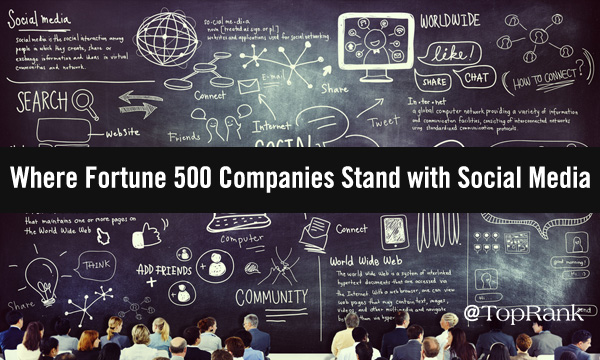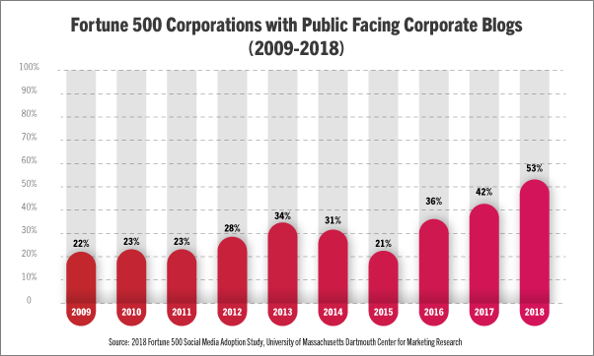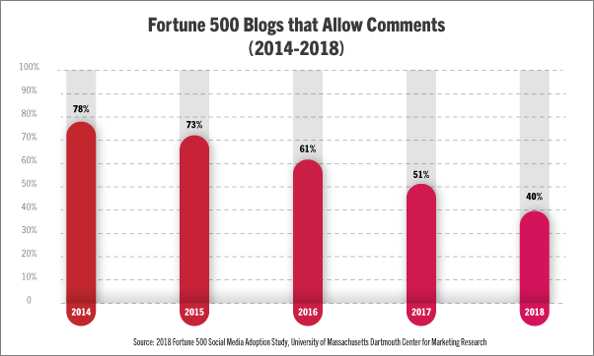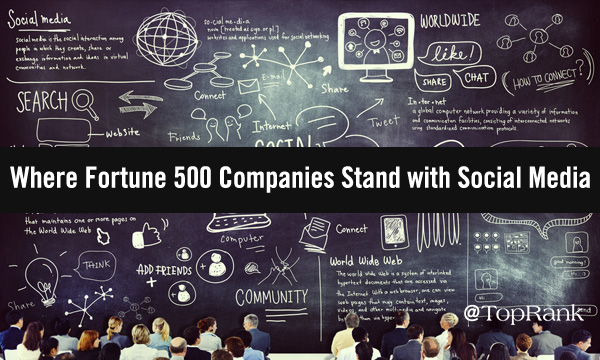Instagram interest is on the rise. These all reflect trends found among Fortune 500 companies on social media, according to recent research from the University of Massachusetts Dartmouth’s Center for Marketing Research. Here’s what you need to know about how the world’s largest corporations are tackling social media, plus some helpful resources to help give your social media marketing efforts a boost. More Than Half of F500 Companies Now Have a Blog It’s kind of amusing to see blogging grouped into this study as a social media tactic. The percentage of corporate blogs on company websites among Fortune 500 companies is up to 53%, rising 11 points from a year ago. In general, we believe blogging is an essential digital marketing tactic for almost any business, large or small. For more insights on driving more targeted traffic to your own corporate blog, check out these recent posts: Twitter and Facebook are Table Stakes for Top Dogs Dartmouth reports that 455 of the 2018 F500 companies have active Twitter accounts (91%) and 445 (89%) have Facebook pages. Here are some posts that can help you see the big picture, with examples and actionable tips: Fortune 500 Companies Are All-In on LinkedIn While Facebook and Twitter are creeping upward, and Instagram is experiencing rapid growth, LinkedIn remains the leader in terms of F500 penetration. Given its business-oriented context, and its audience of more than 500 million professionals, LinkedIn is clearly a no-brainer for any major company. Check out these articles for tips on tightening up your LinkedIn game: Social Media is Big Business Across all channels and platforms, the world’s most powerful corporations are increasingly recognizing social media marketing as a necessity rather than a nice-to-have — a trend we expect will continue into 2019.

Blogs are booming. Instagram interest is on the rise. Facebook is forever fashionable. And LinkedIn continues to lead the pack.
These all reflect trends found among Fortune 500 companies on social media, according to recent research from the University of Massachusetts Dartmouth’s Center for Marketing Research.
We scoured UMass Dartmouth’s research in search of key takeaways and surprising tidbits that would intrigue and inspire B2B and B2C brands large and small. Here’s what you need to know about how the world’s largest corporations are tackling social media, plus some helpful resources to help give your social media marketing efforts a boost.
More Than Half of F500 Companies Now Have a Blog
It’s kind of amusing to see blogging grouped into this study as a social media tactic. But hey, the research comes from an academic institution, not a marketing entity, and they started conducting it 10 years ago when the lines were more blurred. In any case, there’s still plenty of integration and overlap between blogging and social media (i.e., long-form posts on LinkedIn) so the medium is definitely fair game here.
From 2017 to 2018, Dartmouth’s data finds one of the biggest year-to-year spikes in blog usage since they started tracking in 2008. The percentage of corporate blogs on company websites among Fortune 500 companies is up to 53%, rising 11 points from a year ago.

If that number still seems low to you (it does to me), keep in mind the folks compiling this report aimed to include only blogs that: a) are public-facing, and b) include content that goes beyond “newsroom” type posts such as product announcements, press releases, and philanthropic involvement.
The chart above offers a compelling visualization of the firm traction that content marketing is now seeing in the high-level business world, after failing to truly take off for several years. There’s little reason to think we won’t see this proliferation power ahead at a frantic pace.
Of particular interest, to me, is the rapid decline in number of blogs that allow comments:

This is emblematic of a real conundrum: the internet can be a nasty place. On large and well-trafficked blogs, moderating comments can prove to a be prohibitively time-consuming task….

COMMENTS